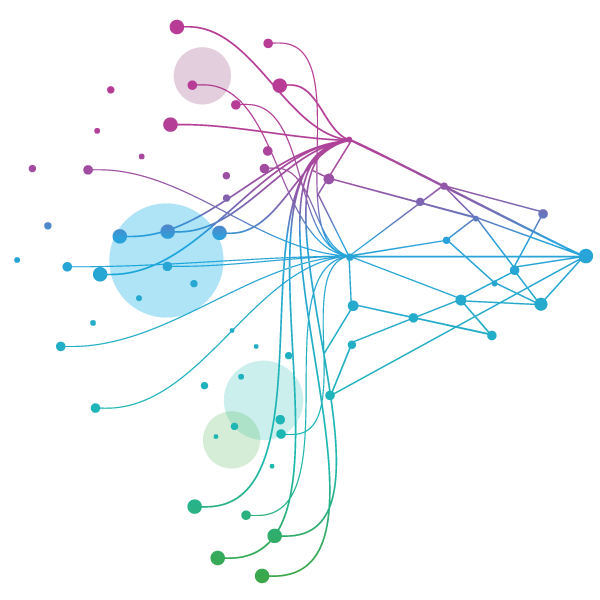Unravel the complexities of cancer treatment with patient-level data-driven solutions.






















- Blogs
- Two Lenses on Oncology Biomarker Tests: Patient Data Meets Lab Insights
Introduction
In the evolving landscape of precision medicine, biomarkers have become the compass guiding clinicians toward more targeted, effective treatments. But behind every biomarker result lies a complex ecosystem of diagnostic processes, technologies, and human decisions—often less apparent to those outside the lab.
This blog explores two complementary perspectives: one grounded in patient-level data, and another rooted in the operational realities of diagnostic labs.
The choice of test technology and panels, along with a clear understanding of testing delays, the proportion of invalid results, and the level of communication, are key factors that ultimately shape the speed, cost, accessibility, and clarity of oncology biomarker testing outcomes.
By integrating these perspectives, we gain a more complete understanding of the oncology biomarker ecosystem—one that empowers smarter decisions across drug development, diagnostics, and treatment. When a patient receives a biomarker test result, it reflects more than just data; it’s the outcome of a sophisticated network of lab technologies, workflows, and expert decisions—subtle, often behind the scenes, yet essential to the promise of precision oncology.
Section 1: Why Diagnostic Insights Matter
In the era of precision medicine, oncology biomarker testing has emerged as a critical enabler—not only for guiding treatment decisions at the individual patient level but also for shaping the future of drug development.
Biomarkers help identify which patients are most likely to benefit from targeted therapies, making them indispensable in both clinical and research settings.
As a result, biopharmaceutical companies and companion diagnostics developers are increasingly seeking deeper insights into the biomarker testing environment itself.
While real-world evidence provides a clinical view of biomarker testing, it often lacks visibility into how those results are generated—what technologies are used and what operational challenges labs face. This missing layer of information has become essential for more effective market dynamics tracking, optimizing diagnostic strategies, improving test accessibility, and ensuring that innovative therapies reach the right patients at the right time.
Section 2: Two Complementary Perspectives
IQVIA Oncology Dynamics, with more than 350,000 cases collected annually across top 20 markets, offers a powerful view of biomarker testing activity at the clinical level. It captures data across more than 90 oncology biomarkers, including patient testing rates, test types, and results. This clinical insight is essential for understanding treatment patterns and supporting biopharma companies in their commercial and development strategies.
But to truly grasp the complexity of biomarker testing, we must look deeper - into the diagnostic process itself. This is where the IQVIA Oncology Biomarker Monitor (OBM) becomes indispensable.
By sourcing insights from diagnostic laboratory directors, OBM can illuminate the operational aspects of testing—such as the technologies employed, the sequencing of tests, the causes of delays or inconclusive results, and the quality of communication between healthcare providers and laboratories.
Section 3: Why Lab-Level Insights Matter to Biopharma
Lab-level insights are often underrepresented in traditional datasets, yet they hold the key to identifying bottlenecks, improving turnaround times, and ensuring that testing strategies align with clinical needs. By integrating both clinical and diagnostic perspectives, we can build a more complete and actionable view of the oncology biomarker landscape—one that supports better decisions, faster innovation, and ultimately, better outcomes for patients.
While the Oncology Biomarker Monitor provides a wealth of information on how biomarker testing is conducted, the question is: why is this information important to biopharma?
The answer lies in the strategic value these insights unlock across the product lifecycle. They offer clear, actionable benefits for biopharma and companion diagnostic companies, including:
- Targeted Drug Development
Focus on the right diagnostic pathways and companion diagnostics (CDx) to support precision therapies. - Smarter Market Access Planning
Understand testing methodologies and cost structures to inform reimbursement strategies. - Accelerating Technology Adoption
Identify barriers to NGS and other advanced platforms, and collaborate with labs to support broader uptake. - Competitive Differentiation
Use insights on turnaround times, test reliability, and lab workflows to position therapies more effectively. - Commercial Enablement
Equip sales and marketing teams with real-world lab insights to educate stakeholders and support biomarker-driven treatment decisions. - Stronger CDx Partnerships
Collaborate with diagnostic partners to ensure testing availability, streamline promotion, and enhance education.
By bridging the gap between diagnostic execution and therapeutic innovation, OBM becomes a strategic asset for any company invested in the future of precision oncology.
Conclusion: A Dual-Lens View for Smarter Precision Medicine
As the oncology landscape grows more complex, so does the need for integrated insights.
While Oncology Dynamics captures the clinical pulse of biomarker testing — who gets tested, for what, and with what result — Oncology Biomarker Monitor reveals the operational heartbeat behind it all.
Together, they offer a dual-lens view that is greater than the sum of its parts: one that connects patient-level outcomes with lab-level realities. For biopharma companies, this means not only understanding the market but shaping it. From optimizing diagnostic strategies to accelerating therapy adoption, the path to smarter precision medicine starts with seeing the full picture.
Ready to unlock the full potential of your biomarker strategy?
Visit our Global Oncology Intelligence webpage to learn how IQVIA’s integrated insights can support you.





